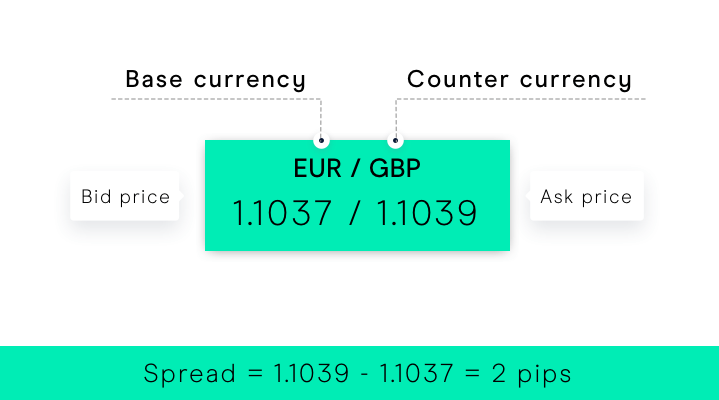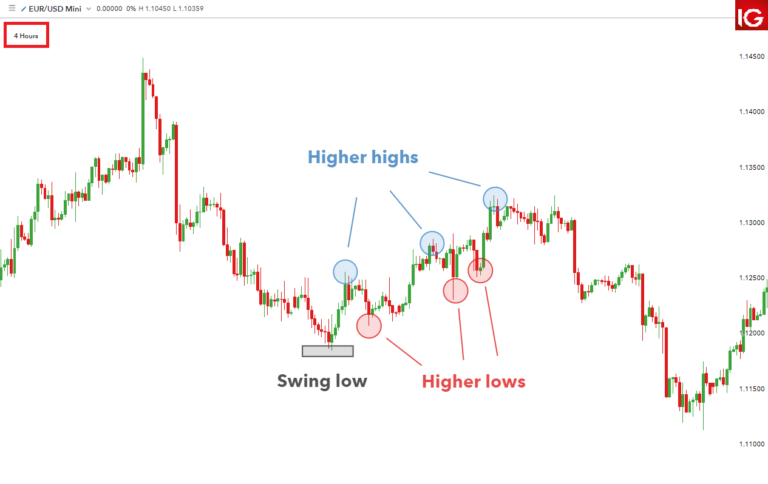Introduction to Forex Trading Course
In today’s rapidly evolving world, continuous learning has become imperative for personal and professional growth. With the advent of online education, acquiring new skills and knowledge has never been more accessible. However, with a plethora of online courses available, choosing the right one can be overwhelming. To navigate this maze effectively, it’s essential to follow a structured approach. In this comprehensive guide, we will delve into the step-by-step process of selecting the perfect online course to meet your needs.
Determine Your Goals, Learning Style, and Skill Level
Before embarking on your quest for the ideal online course, take some time to introspect and define your objectives clearly. Ask yourself: What do I aim to achieve by taking this course? Whether it’s enhancing your professional expertise, acquiring a new hobby, or exploring a passion, understanding your goals will guide you in selecting the most relevant course.
Additionally, assess your learning style and preferences. Are you someone who thrives in interactive, hands-on environments, or do you prefer self-paced learning? Understanding how you best absorb and retain information will help you choose a course format that aligns with your learning style.
Furthermore, evaluate your current skill level in the subject matter. Are you a complete novice, an intermediate learner, or an advanced practitioner? Identifying your skill level will enable you to filter out courses that may be too basic or too advanced for your needs.
Research Course Providers and Instructors
When researching course providers and instructors for online learning, it’s essential to delve deeper into various aspects to ensure you’re making an informed decision. Here’s an expanded discussion on how to assess both course providers and instructors:
- Course Providers: a. Reputation and Credibility: Begin by identifying well-established online learning platforms known for their reputation and credibility. Platforms such as Coursera, Udemy, LinkedIn Learning, and edX have gained recognition for offering high-quality courses across a wide range of subjects. Explore their track record, user feedback, and any industry accolades or awards they may have received. b. Content Quality: Assess the quality of the content offered by the platform. Look for platforms that collaborate with reputable institutions or industry experts to develop their course material. Review sample courses or course previews to gauge the depth of coverage, clarity of instruction, and relevance to your learning objectives. c. User Experience: Evaluate the platform’s user interface, navigation features, and overall user experience. A user-friendly interface with intuitive design elements can enhance your learning journey and make it easier to access course materials, track progress, and engage with fellow learners. d. Customer Support: Investigate the level of customer support provided by the platform. Look for platforms that offer responsive customer support channels such as live chat, email support, or dedicated help centers. Prompt assistance with technical issues, billing inquiries, or course-related queries can significantly enhance your overall experience. e. Financial Policies: Review the platform’s pricing structure, refund policies, and any hidden fees or charges. Look for transparent pricing models and flexible payment options to ensure affordability and minimize financial risk.
- Instructors: a. Expertise and Credentials: Assess the qualifications and expertise of the instructors delivering the course. Look for instructors with relevant academic credentials, professional certifications, or industry affiliations. Explore their background, work experience, and any specialized knowledge or skills they bring to the table. b. Industry Experience: Consider the instructor’s practical experience and real-world insights in the subject matter. Instructors with hands-on experience in their field can offer valuable perspectives, practical examples, and industry-specific best practices that enrich the learning experience. c. Teaching Pedagogy: Evaluate the instructor’s teaching style, communication skills, and ability to engage and motivate learners. Look for instructors who can explain complex concepts clearly, foster interactive learning environments, and adapt their teaching approach to accommodate diverse learning styles. d. Track Record: Research the instructor’s track record of teaching effectiveness and student outcomes. Look for reviews, ratings, or testimonials from previous learners that highlight the instructor’s strengths, responsiveness to student needs, and overall impact on learning outcomes. e. Continued Learning and Development: Consider whether the instructor demonstrates a commitment to ongoing learning and professional development. Instructors who actively participate in conferences, workshops, or continuing education programs are more likely to stay updated on industry trends, emerging technologies, and evolving best practices, ensuring the course content remains relevant and up-to-date.
By thoroughly researching both course providers and instructors, you can make a well-informed decision and select an online course that meets your learning objectives and expectations. Remember to prioritize factors such as reputation, content quality, instructor expertise, and support resources to maximize the value of your online learning experience.
Check Course Content and Curriculum
When assessing the course content and curriculum of an online course, it’s crucial to conduct a thorough evaluation to ensure it meets your learning needs and preferences. Here’s a detailed exploration of the factors to consider:
- Course Syllabus and Module Descriptions: a. Alignment with Goals: Carefully review the course syllabus and module descriptions to ensure they align with your learning objectives and expectations. Look for specific topics, skills, or competencies covered in each module and assess how they contribute to achieving your desired outcomes. b. Comprehensiveness: Evaluate the depth and breadth of coverage provided by the course. Ensure that the curriculum covers all essential aspects of the subject matter and offers a comprehensive understanding of relevant concepts, theories, and practical applications. c. Progression: Analyze the structure and sequencing of modules to assess how topics progress from basic to advanced levels. A well-organized curriculum with logical progression facilitates a smoother learning experience and ensures mastery of foundational concepts before advancing to more complex topics.
- Learning Objectives: a. Clarity and Specificity: Examine the clarity and specificity of learning objectives outlined in the course materials. Clear and well-defined learning objectives provide a roadmap for what you can expect to achieve by completing the course and help you gauge your progress along the way. b. Relevance: Assess the relevance of learning objectives to your personal or professional goals. Ensure that the objectives address your specific needs and aspirations and are aligned with the skills or competencies you wish to develop.
- Teaching Methods and Resources: a. Multimedia Content: Look for courses that offer a variety of multimedia content to cater to different learning styles. Video lectures, interactive tutorials, animations, and visual aids can enhance comprehension and retention of course material. b. Interactive Elements: Evaluate the presence of interactive elements such as quizzes, assessments, and exercises designed to reinforce learning and measure progress. Interactive components provide opportunities for active engagement and self-assessment, promoting deeper understanding and mastery of concepts. c. Practical Applications: Assess whether the course offers opportunities for hands-on projects, case studies, or real-world applications. Practical exercises allow you to apply theoretical knowledge to practical scenarios, strengthening problem-solving skills and enhancing relevance and applicability of learning. d. Supplementary Materials: Consider the availability of supplementary materials such as readings, articles, and downloadable resources. Additional resources complement the core curriculum, provide further insights into specific topics, and support self-directed learning initiatives.
- Instructor Engagement and Support: a. Instructor Presence: Evaluate the level of instructor engagement and interaction within the course. Look for courses where instructors actively participate in discussions, provide feedback on assignments, and address learner queries and concerns. b. Support Resources: Assess the availability of support resources such as discussion forums, help centers, and office hours. Access to support channels facilitates collaboration, fosters a sense of community among learners, and ensures timely assistance with course-related issues.
By thoroughly examining the course content, curriculum, and instructional resources, you can make an informed decision and select an online course that aligns with your learning goals, preferences, and expectations. Remember to prioritize factors such as relevance, comprehensiveness, interactivity, and instructor engagement to maximize the value and effectiveness of your learning experience.
Analyse Cost and Value for Money
When analyzing the cost and value for money of an online course, it’s essential to consider various factors beyond just the initial price tag. Here’s a comprehensive exploration of how to assess the affordability and value proposition of a course:
- Pricing Structures: a. Course Duration: Consider the duration of the course relative to its cost. Longer courses may offer more extensive coverage of topics but may also come with a higher price tag. Evaluate whether the duration aligns with your learning preferences and availability. b. Level of Instructor Involvement: Some courses offer varying levels of instructor involvement, ranging from self-paced modules with minimal instructor interaction to more intensive programs with live lectures, feedback sessions, and personalized coaching. Assess how the level of instructor involvement impacts the overall value of the course. c. Additional Resources or Certifications: Take into account any additional resources or certifications included in the course package. Supplementary materials, access to exclusive content, or industry-recognized certifications can enhance the value proposition of the course and justify a higher price point.
- Return on Investment (ROI): a. Career Advancement: Evaluate whether the skills and knowledge gained from the course are likely to contribute to your career advancement prospects. Consider how the course aligns with your career goals, industry trends, and employer expectations. Courses that offer relevant, in-demand skills may yield a higher ROI in terms of career growth and salary potential. b. Job Opportunities: Assess the impact of the course on your job prospects and employability. Will completing the course enhance your qualifications, make you more competitive in the job market, or open up new career opportunities? Courses that provide specialized skills or credentials sought after by employers may offer significant value in terms of job placement and career advancement. c. Personal Enrichment: Consider the intrinsic value of the course in terms of personal development and enrichment. Courses that allow you to pursue a passion, explore new interests, or cultivate lifelong learning habits can enrich your life beyond monetary returns, enhancing overall satisfaction and fulfillment.
- Discounts, Promotions, and Scholarships: a. Financial Assistance: Look for any discounts, promotions, or scholarships offered by the course provider to make the course more affordable. Some platforms may offer limited-time discounts, referral bonuses, or scholarship programs to support learners with financial constraints. b. Installment Plans: Evaluate whether the course provider offers flexible payment options such as installment plans or payment schedules. Flexible payment arrangements can help spread out the cost of the course over time, making it more manageable for learners on a budget.
By conducting a comprehensive analysis of the cost and value proposition of an online course, you can make a well-informed decision that maximizes the return on your educational investment. Remember to consider both the immediate costs and long-term benefits of the course, as well as any available discounts or financial assistance options to optimize affordability and value for money.
Consider Course Timings, Flexibility, and Support System
When considering course timings, flexibility, and the support system provided, it’s essential to assess how well they align with your schedule, learning preferences, and need for assistance. Here’s a detailed examination of these critical aspects:
- Course Timings and Flexibility: a. Fixed Schedule vs. Self-Paced: Determine whether the course follows a fixed schedule with set deadlines and live sessions or offers a self-paced, asynchronous format. Fixed-schedule courses may require you to adhere to specific class times and deadlines, which may not be suitable if you have other commitments or prefer more flexibility. On the other hand, self-paced courses allow you to study at your own pace, providing greater flexibility to balance learning with work, family, or other obligations. b. Availability of Recorded Content: For courses with live sessions or scheduled lectures, consider whether recorded content is available for playback at your convenience. Access to recorded lectures allows you to review materials, catch up on missed sessions, or study at times that best suit your schedule.
- Support System: a. Online Forums and Discussion Boards: Evaluate whether the course offers access to online forums, discussion boards, or community groups where you can interact with peers and instructors. These platforms facilitate collaboration, knowledge sharing, and peer-to-peer support, enriching the learning experience and fostering a sense of community among learners. b. Instructor Interaction: Assess the level of instructor interaction and support provided within the course. Look for opportunities to engage with instructors through Q&A sessions, office hours, or personalized feedback on assignments. Direct access to instructors can enhance understanding, clarify doubts, and provide valuable guidance and mentorship. c. Dedicated Customer Support: Consider the availability of dedicated customer support to address any queries or technical issues promptly. Look for platforms that offer responsive customer support channels such as live chat, email support, or toll-free helplines. Prompt assistance with course-related inquiries or technical challenges can mitigate frustration and ensure a smooth learning experience.
- Accessibility and Accommodations: a. Accessibility Features: Evaluate whether the course platform offers accessibility features to accommodate learners with diverse needs. Look for features such as closed captioning, screen reader compatibility, or alternative formats for course materials to ensure equitable access for all learners. b. Accommodations for Different Time Zones: If you’re located in a different time zone from the course provider or instructor, consider whether accommodations are made to accommodate learners in different regions. Flexible scheduling options, asynchronous communication channels, and recorded content can help mitigate time zone differences and ensure inclusivity.
By considering course timings, flexibility, and the support system provided, you can choose an online course that fits seamlessly into your lifestyle, learning preferences, and support needs. Whether you prefer a structured schedule with live sessions or the flexibility of self-paced learning, prioritize platforms that offer robust support resources and foster a collaborative learning environment to maximize your success and satisfaction.
Consider Course Reviews and Testimonials
When considering course reviews and testimonials as part of your decision-making process, it’s crucial to delve deeper into the feedback provided by previous learners. Here’s a detailed exploration of how to effectively leverage course reviews and testimonials:
- Authenticity and Source: a. Verify Authenticity: Ensure that the reviews and testimonials you’re considering are authentic and trustworthy. Look for reviews from reputable sources such as verified users on the course platform, independent review websites, or social media platforms. b. Consider Multiple Sources: Seek out reviews and testimonials from a variety of sources to gain a well-rounded perspective. Explore reviews on different platforms and forums to assess consistency in feedback and identify any common themes or patterns.
- Insights and Experiences: a. Firsthand Insights: Pay attention to the insights and experiences shared by previous learners who have completed the course. Look for specific examples, anecdotes, and real-life scenarios that provide context and depth to their feedback. b. Strengths and Weaknesses: Evaluate the strengths and weaknesses highlighted in the reviews. Identify recurring themes or patterns related to the quality of instruction, course content, platform usability, and post-course support. Consider how these factors align with your own learning preferences and priorities.
- Overall Sentiment and Consensus: a. Overall Sentiment: Assess the overall sentiment expressed in the reviews to gauge the general satisfaction level of learners. Look for indications of enthusiasm, satisfaction, or disappointment conveyed by reviewers. b. Consensus Among Learners: Consider the consensus among learners regarding the course’s credibility and suitability. While a few negative reviews are inevitable, look for trends or consensus among reviewers to determine whether the course meets the expectations of the majority of learners.
- Specific Considerations: a. Quality of Instruction: Evaluate feedback related to the quality of instruction provided by the course instructor(s). Look for comments on clarity of explanations, engagement level, responsiveness to learner queries, and overall teaching effectiveness. b. Course Content: Assess feedback on the relevance, depth, and breadth of the course content. Look for comments on the comprehensiveness of the material, alignment with learning objectives, and practical applicability of concepts covered. c. Platform Usability: Consider feedback on the usability and functionality of the course platform or learning management system. Look for comments on ease of navigation, accessibility of resources, technical issues encountered, and overall user experience. d. Post-Course Support: Evaluate feedback related to post-course support services provided by the course provider. Look for comments on the availability of support resources, responsiveness of customer service, and assistance with technical or administrative issues.
By thoroughly analyzing course reviews and testimonials, you can gain valuable insights into the strengths, weaknesses, and overall effectiveness of the course. Use this information to make an informed decision that aligns with your learning goals, preferences, and expectations, ensuring a rewarding and fulfilling learning experience.
Conclusion
Choosing the right online course requires careful consideration and strategic planning to ensure a rewarding learning experience. By following the step-by-step approach outlined in this guide, you can navigate the selection process effectively and make an informed decision that aligns with your goals, learning style, and budget.
Remember to prioritize factors such as course content, instructor expertise, affordability, flexibility, and support system when evaluating your options. By investing time and effort upfront in researching and selecting the right course, you can embark on a journey of personal and professional development with confidence and clarity.
Read our latest article on Passive Income
FAQs
- What is trading?
- Trading refers to the buying and selling of financial instruments such as stocks, bonds, currencies, commodities, or derivatives with the aim of making a profit from price movements.
- What are the different types of trading strategies?
- There are various trading strategies, including day trading, swing trading, position trading, trend following, scalping, and algorithmic trading. Each strategy involves different timeframes, risk levels, and approaches to market analysis.
- What is the difference between trading and investing?
- Trading involves short-term buying and selling of financial assets to capitalize on price fluctuations, typically with the aim of making quick profits. Investing, on the other hand, involves buying and holding assets for the long term with the expectation of generating returns over time through dividends, interest, or capital appreciation.
- What are the key factors that influence trading decisions?
- Trading decisions are influenced by various factors, including market trends, economic indicators, geopolitical events, company earnings reports, investor sentiment, and technical analysis indicators. Traders also consider risk management, liquidity, and their own trading strategies and objectives.
- What is technical analysis, and how is it used in trading?
- Technical analysis is a method of evaluating securities by analyzing statistical trends and historical price and volume data. Traders use technical analysis tools such as charts, patterns, and indicators to identify potential entry and exit points and to make informed trading decisions based on past price movements.
- What is fundamental analysis, and how does it differ from technical analysis?
- Fundamental analysis involves analyzing the intrinsic value of a security by examining its financial statements, earnings, growth prospects, industry trends, and macroeconomic factors. Unlike technical analysis, which focuses on price and volume data, fundamental analysis looks at the underlying fundamentals of a company or asset to determine its value.
- What are the risks associated with trading?
- Trading involves inherent risks, including market volatility, liquidity risk, counterparty risk, and geopolitical or economic uncertainty. Traders may also face risks related to leverage, margin calls, and sudden price movements, which can result in significant financial losses.
- How can I manage risk when trading?
- Risk management is essential for traders to protect their capital and minimize potential losses. Strategies for managing risk include setting stop-loss orders to limit downside exposure, diversifying your trading portfolio, sizing positions appropriately, and avoiding excessive leverage.
- What are some common mistakes to avoid in trading?
- Common trading mistakes include overtrading, ignoring risk management principles, chasing market trends, letting emotions dictate trading decisions, and failing to conduct thorough research or analysis before entering trades. It’s important to have a disciplined approach and to learn from past mistakes.
- Do I need a large amount of capital to start trading?
- The amount of capital required to start trading depends on various factors such as the trading strategy, asset class, brokerage fees, and risk tolerance. While some trading strategies may require substantial capital, others can be pursued with smaller amounts. It’s essential to start with an amount you can afford to lose and to gradually build your trading capital over time.
Click here to read more Forex Trading Course





